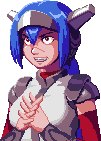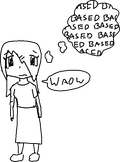Tropes are not faulty world-building, they're the bones of the fiction. Tropes explain the edges of the world and guide readers into the interesting bit where your story takes place.
The Epic of Gilgamesh is why shonen fiction exists and why the authors of the latter don't have to explain the social dynamics of the good-hearted hero and his angsty friend who's always training to beat him in a fight. You just get it because it is a story as old as stories, so they can spend 40 pages explaining the mechanics of ki or whatever.
The character archetypes you describe are pervasive because they're real, and they offer readers a way to bootstrap a connection to your work by analogy with people they've known or characters they've enjoyed in other fiction.
This isn't to say you should just pulp out and write by numbers, of course (unless you want to). Tropes, played straight or subverted, are a tool to manage the expectations of your audience and show-don't-tell your way into having enough room to tell the story without having to write Tolkienesque appendices to flesh out every goopy space elf in the galaxy.
Real people have long stretches of time where small variations of the same damn thing happen over and over, but fictional people don't unless they're in a time travel story. Personal growth is a journey; character growth is a brochure.
My only recommendation is that you try to avoid building depth through dialogue. Conflict, action, and revelation are your friends. Dialogue is where you tell the reader facts about the world, and only rarely where characters are fleshed out. The interaction between the characters and the facts of the world is the world.





 )
)

 and human space fash (Frieden)
and human space fash (Frieden)  who fought a
who fought a 



